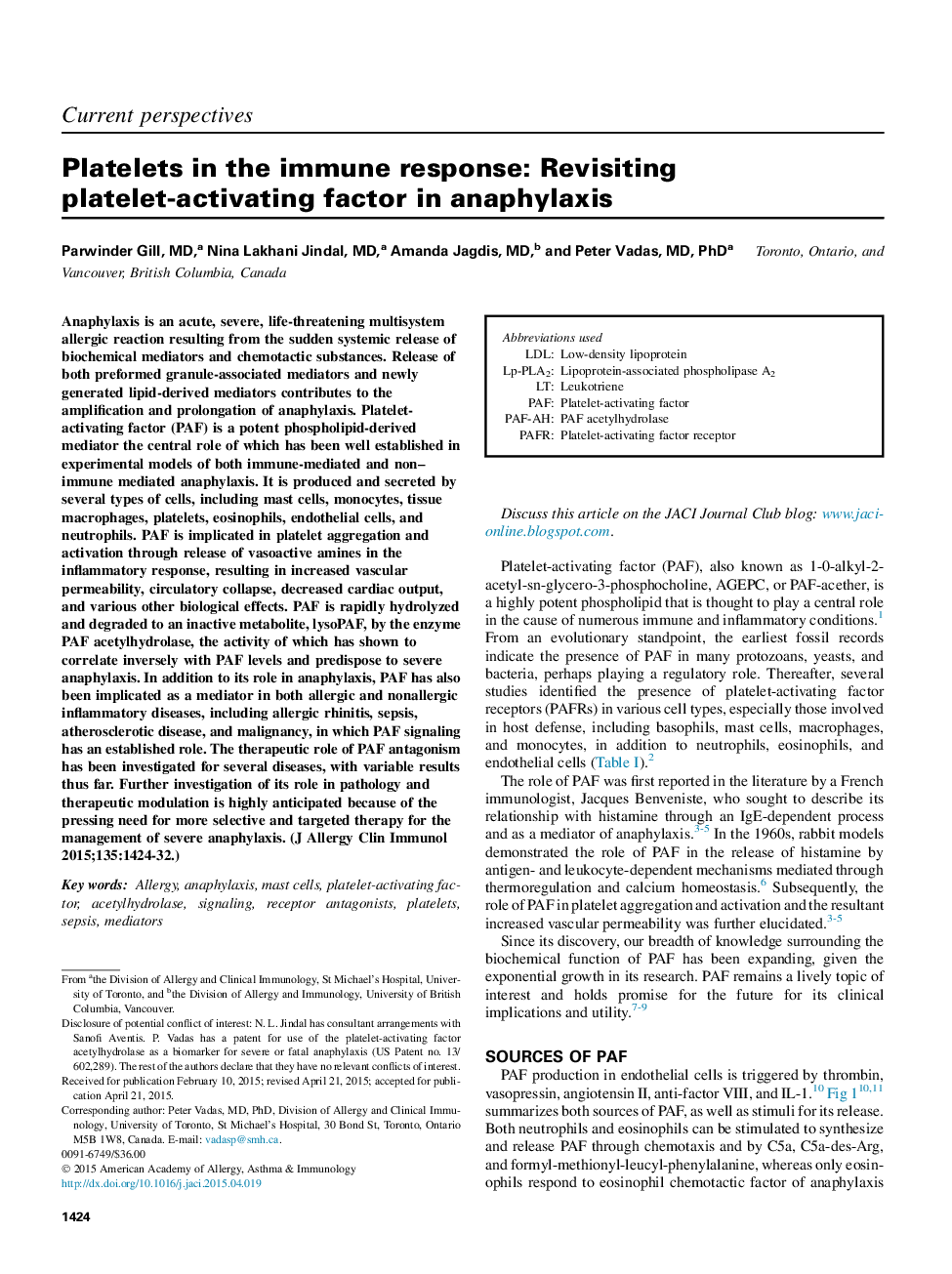| کد مقاله | کد نشریه | سال انتشار | مقاله انگلیسی | نسخه تمام متن |
|---|---|---|---|---|
| 6064172 | 1201859 | 2015 | 9 صفحه PDF | دانلود رایگان |
عنوان انگلیسی مقاله ISI
Platelets in the immune response: Revisiting platelet-activating factor in anaphylaxis
ترجمه فارسی عنوان
پلاکت ها در پاسخ ایمنی: بازخوانی فاکتور فعال کننده پلاکت در آنافیلاکسی
دانلود مقاله + سفارش ترجمه
دانلود مقاله ISI انگلیسی
رایگان برای ایرانیان
کلمات کلیدی
PAFRLp-PLA2 - LP-PLA2PAF acetylhydrolase - PAF استیل هیدرولازPAF-AH - PAF-قAllergy - آلِرژیAnaphylaxis - آنافیلاکسی یا بیشدفاعی Receptor antagonists - آنتاگونیست گیرندهacetylhydrolase - استیل هیدرولازSepsis - سپتیسمی یا مسمومیت خونSignaling - سیگنالینگPlatelet-activating factor - فاکتور فعال کننده پلاکتLipoprotein-associated phospholipase A2 - فسفولیپاز A2 مرتبط با لیپوپروتئینLeukotriene - لکوترینLow-density lipoprotein - لیپوپروتئین کم چگالی یا الدیال LDL - لیپوپروتئین کم چگالی(کلسترول بد)Mast cells - ماست سل هاPAF - نیروی هوایی پاکستانMediators - واسطه هاPlatelets - پلاکت هاplatelet-activating factor receptor - گیرنده فاکتور فعال کننده پلاکت
موضوعات مرتبط
علوم زیستی و بیوفناوری
ایمنی شناسی و میکروب شناسی
ایمونولوژی
چکیده انگلیسی
Anaphylaxis is an acute, severe, life-threatening multisystem allergic reaction resulting from the sudden systemic release of biochemical mediators and chemotactic substances. Release of both preformed granule-associated mediators and newly generated lipid-derived mediators contributes to the amplification and prolongation of anaphylaxis. Platelet-activating factor (PAF) is a potent phospholipid-derived mediator the central role of which has been well established in experimental models of both immune-mediated and non-immune mediated anaphylaxis. It is produced and secreted by several types of cells, including mast cells, monocytes, tissue macrophages, platelets, eosinophils, endothelial cells, and neutrophils. PAF is implicated in platelet aggregation and activation through release of vasoactive amines in the inflammatory response, resulting in increased vascular permeability, circulatory collapse, decreased cardiac output, and various other biological effects. PAF is rapidly hydrolyzed and degraded to an inactive metabolite, lysoPAF, by the enzyme PAF acetylhydrolase, the activity of which has shown to correlate inversely with PAF levels and predispose to severe anaphylaxis. In addition to its role in anaphylaxis, PAF has also been implicated as a mediator in both allergic and nonallergic inflammatory diseases, including allergic rhinitis, sepsis, atherosclerotic disease, and malignancy, in which PAF signaling has an established role. The therapeutic role of PAF antagonism has been investigated for several diseases, with variable results thus far. Further investigation of its role in pathology and therapeutic modulation is highly anticipated because of the pressing need for more selective and targeted therapy for the management of severe anaphylaxis.
ناشر
Database: Elsevier - ScienceDirect (ساینس دایرکت)
Journal: Journal of Allergy and Clinical Immunology - Volume 135, Issue 6, June 2015, Pages 1424-1432
Journal: Journal of Allergy and Clinical Immunology - Volume 135, Issue 6, June 2015, Pages 1424-1432
نویسندگان
Parwinder MD, Nina Lakhani MD, Amanda MD, Peter MD, PhD,
